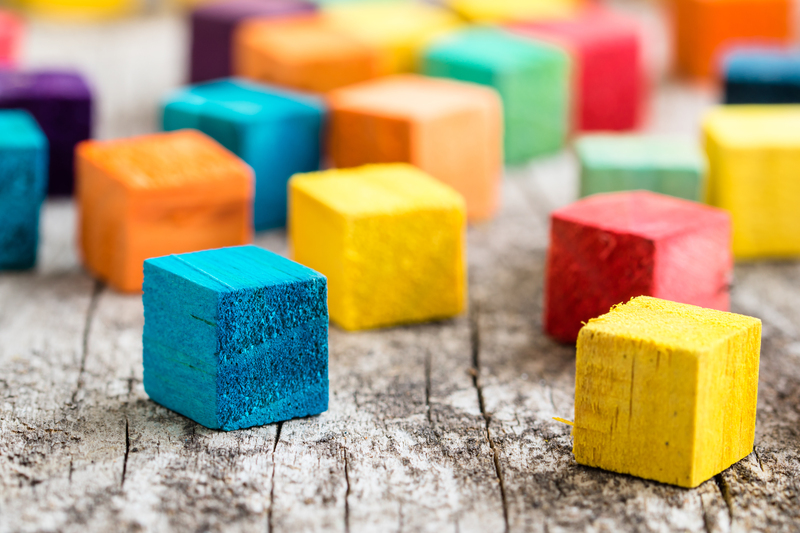How Schools Can Transform Waste into Learning Opportunities
Schools are more than just places for theoretical learning--they are also landscapes for fostering real-world skills and values in the next generation. One compelling and innovative way to achieve this is by transforming waste into learning opportunities.
Traditionally, waste is seen merely as a by-product to be disposed of, yet within educational settings, it can be reimagined as a versatile resource for hands-on learning, environmental awareness, creativity, and community engagement. In the following article, we will explore practical methods and the multifaceted benefits schools gain when they turn waste into educational gold.
Why Waste Should Be Part of the Learning Process
Integrating waste management and transformation into school projects does more than clean up the campus. It teaches sustainability, boosts creativity, encourages problem-solving, and instils responsibility in students. As the world faces mounting environmental challenges, fostering a mindset that values waste as a resource is crucial for building an informed, eco-conscious generation.
- Reinforces Real-World Relevance: Dealing with waste is part of everyday life, making its integration into curriculum highly relevant for students.
- Promotes Eco-Leadership: Educates students on their role in addressing environmental issues, motivating positive changes in their communities.
- Fosters Collaboration: Many projects involving waste transformation naturally require teamwork, strengthening social and cooperative skills.

Types of Waste That Offer Learning Opportunities
Almost every form of waste found in schools--from food scraps to discarded paper--can fuel creative and meaningful learning activities.
- Organic Waste: Food scraps, fallen leaves, and grass clippings can be used in composting and gardening.
- Papers and Packaging: Old worksheets, cardboard boxes, and packaging materials offer endless possibilities for craft and construction.
- Plastics: Bottles, caps, and containers can be upcycled into science experiments, artwork, or DIY furniture.
- Electronic Waste: Broken gadgets provide a gateway for lessons in technology disassembly, recycling, and the importance of responsible e-waste disposal.
Key Methods for Turning School Waste into Learning Experiences
1. Establishing a School-Wide Recycling Program
Starting a recycling initiative is fundamental in the process of waste transformation. Let students lead the charge by organizing awareness campaigns, setting up clearly-labeled bins, and tracking recycling data. Not only does this reinforce sorting and organizational skills, but it can also integrate math, science, and social studies as students analyze the impact of their efforts on the environment and the local community.
2. Composting and Organic Waste Management
Composting is a hands-on, science-driven process that connects biology and environmental studies with life skills. By collecting organic waste from the school cafeteria and grounds, students can:
- Understand decomposition and the role of microbes and insects in ecosystems
- Conduct experiments measuring the speed and efficiency of decomposition under different conditions
- Utilize compost in school gardens, learning about plant growth, soil health, and sustainable food production
3. Upcycling Projects in Art and Technology
Many schools have found innovative ways to integrate upcycling into art and technology classes. Projects might include:
- Creating sculptures or functional art from plastic bottles or scrap metal
- Building birdhouses, furniture, or musical instruments from discarded wood and packaging
- Converting e-waste into robotic projects or tech displays
These activities not only spark creativity but also teach resourcefulness and the value of repurposing materials rather than discarding them.
4. Waste Audits and Data-Driven Learning
Conducting a waste audit involves measuring and categorizing the types and amounts of waste generated at school. Students can:
- Use math skills to chart waste statistics over time
- Propose and test strategies for waste reduction
- Communicate findings through presentations, reports, or digital media
This transforms the abstract concept of environmental impact into tangible, student-led action.
5. Curriculum Integration: Waste Across Subjects
Waste transformation need not be confined to science or art curricula. Schools can embed waste-related activities across a range of subjects:
- Mathematics: Calculating reductions in carbon footprint or financial savings from waste reduction
- Language Arts: Writing persuasive essays or campaign speeches on responsible waste management
- Social Studies: Exploring cultural attitudes toward waste, historical practices, and current global issues
Case Studies: Schools Putting Waste to Work
Case Study 1: School Compost Gardens
One elementary school in California established a composting system using food scraps from the cafeteria and garden waste from school grounds. Students participated at every step, from collecting waste to maintaining the bins and monitoring the composting process. Not only did the initiative reduce landfill waste by 40%, but the rich composted soil enabled the school to grow a thriving vegetable garden--a living classroom for lessons in biology, nutrition, and sustainability.
Case Study 2: From Waste to Art Festival
A middle school in South Africa organized an annual art festival where all the pieces were created from waste materials. Students worked in teams to create sculptures, wearable art, and functional objects from plastics, metal, and cardboard. The festival brought in attention from local media, raised community awareness about waste, and inspired other schools in the region to replicate the event.
Case Study 3: Repair Cafes and E-Waste Workshops
In Europe, several high schools have introduced repair cafes, where students and local volunteers repair broken electronics, clothes, and furniture. Students learn valuable troubleshooting and repair skills, while the school community benefits from extending the life of everyday objects and reducing e-waste.
Benefits Beyond the Classroom
By embracing the challenge of transforming waste into learning, schools see extensive ripple effects:
- Enhanced Student Engagement: Learning becomes more tangible, relevant, and enjoyable, increasing motivation across academic levels.
- Community Involvement: Projects often involve parents, local businesses, and organizations, making education a shared community goal.
- Environmental Stewardship: Students develop lifelong habits of conservation, waste reduction, and responsible citizenship.
- Economic Savings: Schools save money on waste disposal and may even generate funds by selling recyclables or produce.
- Leadership Development: Young people take on real responsibilities, gaining confidence and teamwork skills.
Challenges and How to Overcome Them
While transforming school waste into learning opportunities is immensely beneficial, there are some obstacles to consider:
- Lack of Resources or Infrastructure: Schools may need initial investment in bins, composters, or tools. Seeking grants and community partnerships can help.
- Resistance to Change: Teachers and staff might initially hesitate due to concerns about workload. Providing training and aligning projects with curriculum goals eases the transition.
- Health and Safety: Ensuring proper handling of waste, hygiene, and safety protocols protects student well-being.
Practical Steps for Schools to Begin Transforming Waste Into Learning
- Assess the Waste Stream: Start with a waste audit to understand what materials are available and what volume is generated.
- Set Clear Goals: Determine what the school hopes to achieve--whether it's reducing waste by a certain percentage, launching a composting program, or hosting an upcycled art show.
- Integrate with Curriculum: Connect projects to academic standards and learning outcomes for maximum impact.
- Engage All Stakeholders: Include students, teachers, custodians, parents, and local organizations in the planning and implementation process.
- Start Small and Scale Up: Pilot a single initiative and expand as students and staff gain experience and confidence.
- Celebrate Achievements: Publicly recognize successes, hold events, and share results with the community to build momentum.

Exploring Further: Innovations in Waste Transformation Education
- Green STEM Labs: Explore waste-to-energy experiments and sustainable engineering challenges using discarded materials.
- Zero Waste Schools: Set the ambitious goal of becoming a zero-waste school and pursue certification from organizations that recognize such efforts.
- Virtual Challenges: Leverage technology to connect with other schools for waste reduction competitions and idea sharing.
- Student-Run Social Enterprises: Develop student-led businesses that convert school waste into marketable products, linking entrepreneurship and sustainability.
Conclusion: Building a Sustainable Future Through Waste-Inspired Learning
The transformation of waste into learning opportunities is more than an eco-friendly trend--it is a paradigm shift in education, encouraging the next generation to see value where others see refuse.
By transforming school waste into resources for creativity, practical skills, and community improvement, schools nurture eco-conscious leaders and problem-solvers prepared for the challenges of tomorrow. Whether through compost heaps, upcycled sculptures, or data-driven waste audits, every project becomes a step towards a cleaner, more sustainable, and more inspiring learning environment.
Are you ready to help your school harness the power of waste for education? Start today--turn trash into teaching, and witness the transformation in your students, your school, and your community.